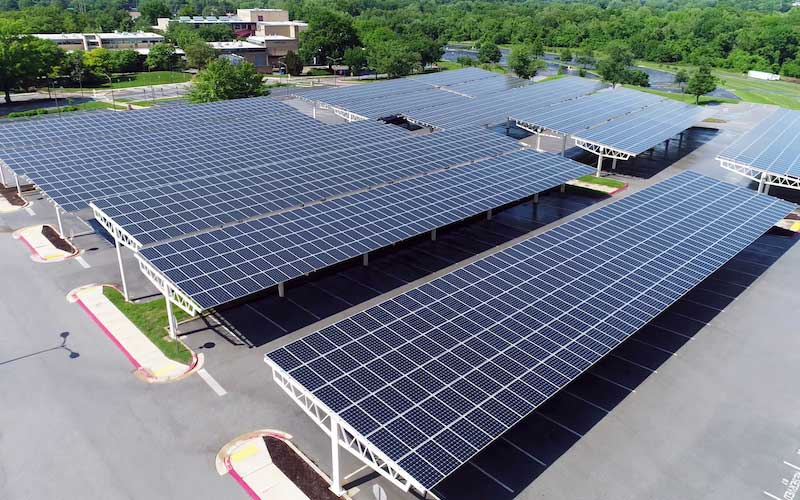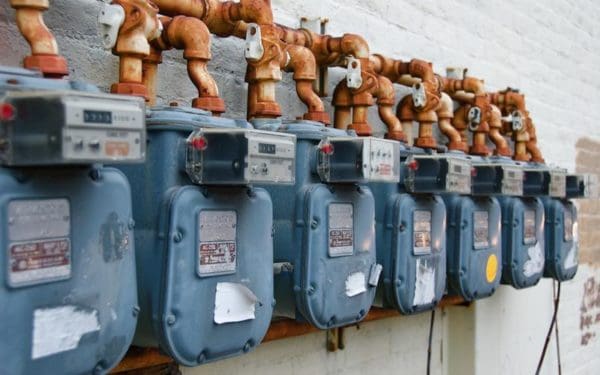
Our electric grid operator uses outdated market rules to block clean energy from joining the grid. Photo Credit: Shutterstock
All eyes were on Texas earlier this year after a cold snap brought the state’s energy grid to its knees, leaving four million people without power for days. The catastrophe highlighted the need for power companies, regulators, and states to work together to manage vital energy resources.
Texas’ grid differs significantly from New England’s. However, we face our own challenges. Chief among them are the nearsighted and outdated policies of our regional energy grid operator, ISO-New England. For years, its leaders have brushed aside the climate crisis in favor of propping up climate-damaging and polluting fossil fuels. Meanwhile, New England states are looking towards clean energy sources as a solution to the climate emergency – not to mention a way to improve public health and boost the economy. But our grid operator keeps throwing up roadblocks that make it difficult for renewable energy projects in the region to get off the ground.
Given the power ISO-New England has to influence where our energy comes from, we won’t be able to meet our climate goals and enjoy the environmental and economic benefits of clean energy unless they undertake serious reform.
Our Electric Grid Operator Hamstrings Renewable Energy
Every year, ISO-New England holds what it calls the “forward capacity auction,” during which energy companies bid to supply a portion of our region’s electricity three years from now. The generators with the lowest bids win a future commitment from ISO-New England to buy energy from them (and get paid for that commitment. It’s a much-needed revenue stream for these power generators, especially for new generators that need to borrow money to develop their project).
The goal of the auction is to provide stability to both our power grid and energy suppliers. By planning three years out, ISO-New England has confidence there will be enough power to meet future demand, and utilities and power generators have time to build the infrastructure needed to get there. This auction also offers a critical opportunity for renewable resources like solar and wind to supply power to the grid, ideally replacing older, more expensive and polluting fossil fuel plants.
However, even as states and consumers call for more clean energy, ISO-New England has implemented policies that make renewables less competitive in this auction. One of these is a rule that forces renewable resources supported by state clean energy policies to submit overpriced bids. ISO-New England claims this rule keeps the market fair. In reality, it artificially inflates the price of renewables, making them unable to compete with existing fossil fuel plants.
ISO-New England also handicaps new renewable energy projects by overestimating their costs in other ways, further tipping the scales. The way our grid operator calculates these costs doesn’t rely on the best available data on project expenses and revenue – or make sense to outside experts – yet ISO-New England won’t explain its methods.
The effect is to significantly limit opportunities for new clean energy projects. It also makes it much more difficult for states to meet their climate and clean energy goals. Ultimately, this leaves all of us in New England paying higher bills for dirtier energy.
In February, ISO-New England held its fifteenth annual forward capacity auction. As we’ve seen before, the auction results reveal that renewables were prevented from competing fairly, meaning the region will not have the clean energy we need to meet our climate policy goals. This year, around 90% of power generation capacity secured in the auction came from traditional fossil fuel generators. Final results also reveal that a few of New England’s most polluting generators were selected – despite significant backlash from the communities in which they’re located.
ISO-New England’s Latest Auction Shows This Bias in Action
In New Hampshire, Merrimack Station – New England’s last coal-fired power plant, which CLF has been working to shut down for years – was selected in the auction. So was the oil-fired Wyman Station in Maine. These old, inefficient, polluting power sources have no business being in use right now, let alone three years from now. In 2024, we should be well on our way to cutting fossil fuel use in half, not relying on these dirty plants.
Despite the auction’s bias towards dirty, outdated fuel supplies, small amounts of clean energy have been chosen over the years. By being selected in an auction process biased against them, those winning bids serve as a testament to how much cheaper renewables are than fossil fuels, and just how competitive they can be if given the opportunity. For example, stand-alone battery storage was selected for the first time in the February auction. However, it accounted for less than 2% of the total power generation capacity contracted for. That’s a drop in the bucket at a time when most New England states have a legal mandate to lower their emissions.
Attempts to Fix Our Energy Markets Have Fallen Flat
States, renewable energy generators, consumer advocates, and advocates including CLF have pushed ISO-New England to fix its energy markets, but with limited success.
At the urging of these various groups, ISO-New England did adopt the Renewable Technology Resource designation in 2015. It opened the door for a limited amount of clean energy to bid in the annual capacity auction. But it did little to fix the underlying issue – less than 0.1% of the power generation contracted for this year came from the program. And the designation ended this year.
That wasn’t the only mechanism meant to open the markets to clean energy. In a half-hearted attempt to align its markets with regional climate policy, in 2019, ISO-New England instituted a program called CASPR. This was intended to integrate state-supported clean energy resources into the capacity market – the same renewable resources ISO-New England jacks up the prices for in its yearly auctions. But the program did not support any renewables in the 2020 and 2021 auctions, and only an extremely small amount of renewables in the 2019 auction.
How to Get More Clean, Renewable Energy onto the Grid
To boost clean energy in New England, our wholesale electricity markets must be redesigned. The grid operator must embrace the benefits of clean energy and remove the archaic rules that prevent renewables from competing fairly with other suppliers.
Distributed solar, wind, and battery storage can make our energy grid more resilient – if the power goes down in one area, local generation can keep the lights on in another. Renewables can also save us money. A 2019 study showed that the rules ISO-New England uses to block clean energy could end up costing New Englanders $3 billion on our electricity bills over the next 10 years. Eliminating the pollution from fossil fuel plants also brings public health benefits, along with economic benefits from investing in local power generation. Not to mention the benefits of avoiding the worst impacts of climate catastrophe.
In late 2020, the New England states released a Vision Statement detailing the need to reform our electricity markets, update transmission system planning, and change how ISO-New England is governed. This state-led visioning process resulted in numerous technical meetings between state representatives and advocates (including CLF), as well as opportunities for the public to comment on pieces of the state-proposed updates. Now, the results of these meetings and comments must be turned into actual reform at ISO-New England.
Our grid operator needs to step away from fossil fuels and into the 21st century – or New England states will be forced to find a new way to manage our energy supply.




